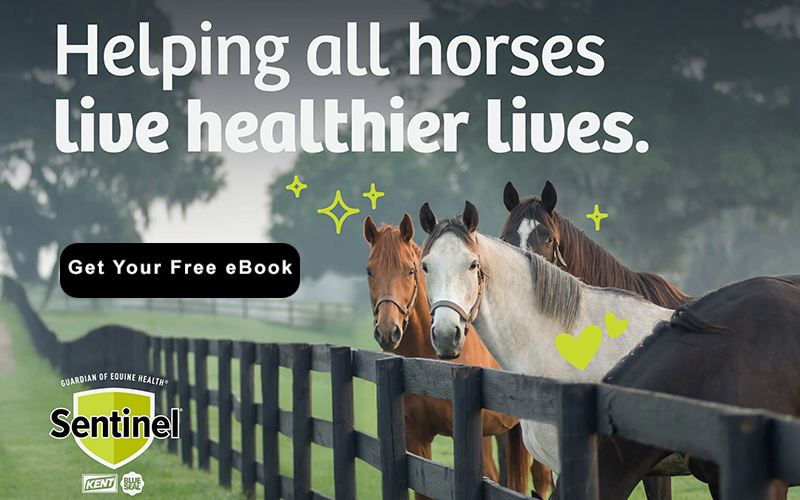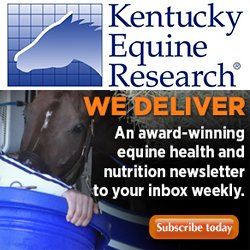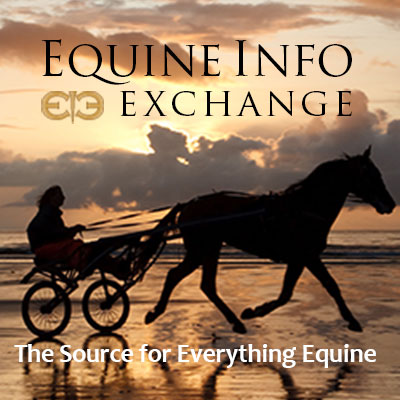Health & Education
We all want the best care possible for our horses. The Heath & Education section covers both Learning Institutions, Organizations as well as many sources for equine assistance including Veterinarians and Farriers.
For those who want a to formally study horses, the Education section includes College Riding, Equine Studies, and Veterinary Schools. Learn about the wide variety of horses in the Horse Breeds section. Supplements and Treatments Therapy are also included in the section.
Everyone can learn from Fine Art and there are some specialty Museums that might surprise you.
Horses as a therapy partner enrich the lives of the disabled. These facilities are listed in our Therapeutic Riding section. To help children and young adults build confidence and grow emotionally, please see the resources available on the Youth Outreach page.
Looking for a place to keep your horse? You can find it in the Horse Boarding section. Traveling? Find a Shipping company or Horse Sitting service if your horse is staying home!
Want to stay up to date with the latest training clinics or professional conferences? Take a look at our Calendar of Events for Health & Education for the dates and locations of upcoming events.
Do we need to add more? Please use the useful feedback link and let us know!
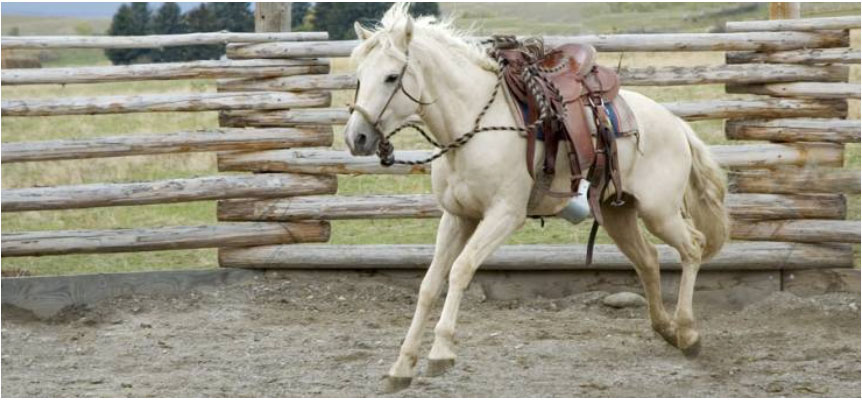
By Kentucky Equine Research Staff
Many people are familiar with melatonin as a sleep aid, but horse owners also may be aware of its role in mare cyclicity and reproduction. Few of us, however, know that melatonin, a neurotransmitter, may affect a horse’s temperament.
In the past, melatonin has been related to aggression in some species. For example, studies show that Syrian hamsters with high melatonin levels demonstrated more aggressive behavior than those with lower melatonin levels. One human study also found that participants administered melatonin exhibited more aggression in specific situations than those receiving a placebo.
To evaluate the effect of melatonin on temperament in horses, Korean researchers recruited 32 horses, all residing in a single riding facility in Korea for a minimum of five years.* The horses were put through a series of tests by three different handlers to determine the following attributes and to assign a score from 0 to 5 with 0-1 being low, 2-3 medium, and 4-5 high:
- Docility—the time it takes to catch the horse in an unfamiliar situation;
- Affinity—the time it takes to become familiar with strangers;
- Dominance—the act of gaining the upper hand with other horses over feed; and
- Trainability—the time it takes to achieve a training goal.
The overall temperament was an average of the four scores, and those scores were compared to melatonin levels collected between 10:00 p.m. and 11:00 p.m.
No significant relationship between melatonin and any of the four temperament measures was identified, suggesting that melatonin cannot be used as a biomarker for horse temperament.
“However, melatonin levels were significantly lower in cold-blooded horses than in Thoroughbreds, which are considered hot-blooded. Those horses actively in a training program had higher melatonin levels than fully trained horses used for competition and riding lessons,” explained Catherine Whitehouse, M.S., a Kentucky Equine Research nutrition advisor.
Having a test available to potentially identify “safe” horses would be valuable to the equine industry, especially when purchasing horses for inexperienced riders or using horses as therapy partners. This could be used in combination with an evaluation from an experienced horse handler.
In addition to regular handling and training, diet and management strategies can help improve behavior-related issues in horses.
“Consider increasing turnout time with herdmates, maximizing forage availability, and supplying a concentrate feed that matches the horse’s energy needs. Some horses that tend to be hyperreactive may benefit from a feed higher in fiber and fat and lower in nonstructural carbohydrates when additional calories are needed beyond high-quality forage and a ration balancer,” advised Whitehouse.
Reprinted courtesy of Kentucky Equine Research. Kentucky Equine Research is an international equine nutrition, research, and consultation company serving horse owners and the feed industry. Our goals are to advance the industry's knowledge of equine nutrition and exercise physiology, apply that knowledge to produce healthier, more athletic horses, and support the nutritional care of all horses throughout their lives. Learn more at KER.com.
There a more informative articles in our section on Health & Education.
*Song, Y., J. Kim, Y. Park, and M. Yoon. 2023. Association between the plasma concentration of melatonin and behavioral temperament in horses. Journal of Animal Science and Technology 65(5):1094-1104.
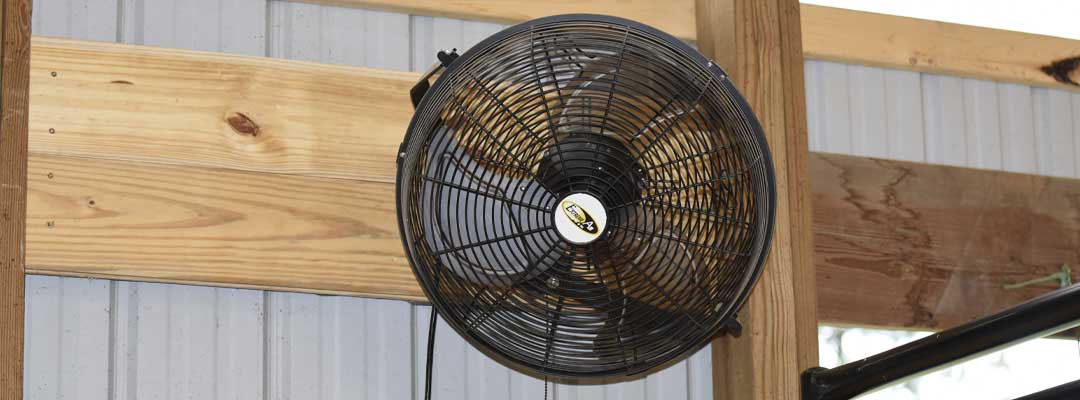
Quality horse stall fans and fresh water aids in horse comfort and heatstroke prevention.
As summer temperatures continue to rise, make sure you’re taking precautions to avoid heatstroke in horses and keep horses comfortable overall. Two important actions to take include installing barn fans and providing horses access to ample fresh, clean water -- always.
Preston Hickman, DVM, Wichita Equine and Sports Medicine, detailed heatstroke in horses and commons signs horse owners need to know:
“Heatstroke resembles a horse tying up and or in shock but can resemble a horse with exhaustion when they collapse. An exhausted horse might be distressed and anxious. He might have a high heart and respiratory rate that does not decrease with rest, and his skin might feel hot and dry. Some horses become stiff and experience pain due to muscle cell damage, which can be detected by observing red or brown urine (hemoglobin and/or myoglobin uria). Horses affected this badly might go down or develop other, often life-threatening conditions such as laminitis, kidney failure or diarrhea.”
Signs of heat stroke in horses include:
- Temperature as high as 105 to 107 F
- Rapid breathing, rapid pulse
- Stumbling, weakness, depression
- Refusal to eat or work
- Dry skin and dehydration
- In severe cases, a horse may collapse or go into convulsions or a coma
BARN FANS | There are many reasons to keep your horse’s temperature under control ranging from heat stroke prevention mentioned above, as well as performance enhancement, fly control and more. When selecting your next barn fan, here are a few things to consider.
Be safe! Choose horse stall fans with an enclosed motor. This will keep dust and debris out and the fan operating as expected. More so, an enclosed motor barn fan helps prevent barn fire risk for your animals. While box fans are commonly found in horse barns, they present greater fire risk as dust and hay can more easily reach the motor, which can potentially cause a fire.
Keep barn fans clean to keep fresh air circulating in your barn. Choose a waterproof model for easy cleaning.
Keep all barn fans pointing in the same direction, with the natural flow of air to maximize circulation.
With a powder-coated mounting bracket and aluminum blades, this premium 18" indoor or outdoor fan stands up in humidity, rain and fog and ranks high among agricultural fans with its increased longevity and corrosion resistance. With a fully enclosed motor, this direct-drive waterproof outdoor fan is maintenance-free and can easily be sprayed down to remove dirt and dust build-up to help ensure both safety and function.
FRESH WATER | The most important nutrient horses receive, and especially during warmer weather, is water. Always make sure horses have access to ample amounts of fresh water. According to the American Association of Equine Practitioners, “An idle 1,100-pound horse in a cool environment will drink 6 to 10 gallons of water per day. That amount may increase to 15 gallons per day in a hot environment. Work horses require 10 to 18 gallons of water per day on average but could require much more in hot weather.”
The amount of fresh water available to your horse, and the source from which it originates, is critical. During warmer weather especially, water sources such as ponds and troughs can quickly generate dangerous algae. While most algae are harmless, certain types can increase horse colic risk, such as blue-green algae, also known as cyanobacteria. Automatic horse waterers can conveniently offer horses ample fresh and safe water when it’s needed the most
Visit Valley Vet to learn more.
Read more: Summer Safety: Barn Fans & Automatic Horse Waterers
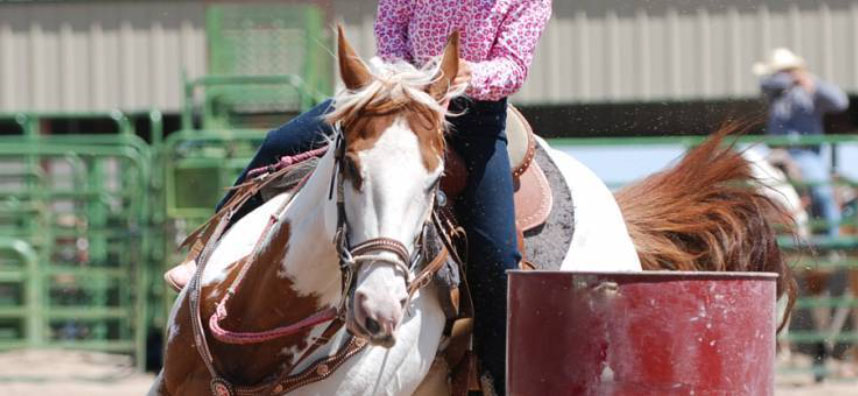
By Kentucky Equine Research Staff
Competitive horses often present to veterinarians with concerns about upper respiratory noise and poor performance. Researchers determined the prevalence of upper airway obstruction by retroactively reviewing medical records of barrel racing horses subjected to overground endoscopy. Upper airway obstruction was common, and over half of those horses were diagnosed with multiple causes of obstruction.
Upper airway obstructions involve structures located in the region of the soft palate and larynx at the back of the throat and include conditions such as:
- Pharyngeal lymphoid hyperplasia;
- Nasopharyngeal collapse;
- Palatal instability;
- Intermittent dorsal displacement of the soft palate;
- Medial deviation of the aryepiglottic fold;
- Recurrent laryngeal neuropathy;
- Vocal fold collapse;
- Ventromedial luxation of the apex of the corniculate process of the arytenoid; and
- Cricotracheal ligament collapse.
“Any of these conditions can have detrimental effects on ventilation and gas exchange, resulting in poor performance,” said Catherine Whitehouse, M.S., of Kentucky Equine Research.
Barrel racing is an anaerobic event that involves sprinting through a cloverleaf pattern at high speed, typically in less than twenty seconds. According to veterinary experts, barrel racing horses are frequently referred for airway evaluations with complaints of roaring and gurgling.*
To improve their understanding of upper airway abnormalities in barrel racing horses, the researchers reviewed the videos obtained during overground endoscopy. This procedure is performed by placing a portable endoscope into the airways of horses and then evaluating the upper airway structures during rest and exercise. In total, 164 Quarter Horses involved in barrel racing underwent overground endoscopy.
No abnormalities were identified in 15% of the evaluated horses during exercise, which means most of the horses were diagnosed with upper airway obstruction. Over half of the horses with abnormalities (56%) had more than one upper airway obstruction, with a total of 279 observed obstructions during exercise. In the 140 horses with upper airway obstructions, the most common abnormalities were nasopharyngeal collapse (49%), pharyngeal instability (42%), and intermittent dorsal displacement of the soft palate (39%). This means that abnormalities of the soft palate and pharyngeal walls occurred more commonly than those involving the larynx.
While airway obstructions are traditionally believed to occur at high speed, the upper airway obstructions noted in this review showed that 55% occurred at low-speed, low-intensity work rather than during the high-speed, high-intensity portion of the exam (only 22%). Specifically, intermittent dorsal displacement of the soft palate was 19 times more prevalent during low-speed exercise. Some horses experienced upper airway obstruction during both low- and high-speed exercise.
“The researchers noted that finding more upper airway obstructions during low-speed, low-intensity exercise was unexpected. They suggested that dynamic upper airway obstructions are not simply due to extreme airway pressures experienced during high-speed exercise or muscle weakness. They proposed it could instead be due to muscular tension or increased contraction of the upper airway secondary to situational stressors or an anticipatory effect of exercise,” explained Whitehouse.
When abnormalities were observed during high-speed exercise, it was primarily during the final straight-line sprint to the finish rather than when turning around the barrels.
“The final sprint is when airway pressure changes are likely the greatest. Also, airway muscle fatigue may be a contributing factor at this point in the competition,” Whitehouse added.
Finding a high prevalence of dorsal displacement of the soft palate brings to light a recent study suggesting that upper airway abnormalities could be a result of asthma. That study suggested looking for evidence of equine asthma rather than focusing on the soft palate exclusively when faced with horses presenting for upper respiratory noise or poor performance.**
For equine asthma, allergen avoidance and using medications such as bronchodilators and corticosteroid anti-inflammatory drugs in conjunction with high-quality marine-derived omega-3 supplement are the treatments of choice based on the most recent guidelines.***
“EO-3 and other antioxidant products developed by Kentucky Equine Research are recommended for horses exhibiting poor performance. Providing these nutrients can help reduce the negative impact of oxidative stress created by intense exercise and demanding competition schedules. Consider adding EO-3, Nano-E, and Nano-Q10 to your feeding program to support health and performance,” Whitehouse recommended.
Reprinted courtesy of Kentucky Equine Research. Kentucky Equine Research is an international equine nutrition, research, and consultation company serving horse owners and the feed industry. Our goals are to advance the industry's knowledge of equine nutrition and exercise physiology, apply that knowledge to produce healthier, more athletic horses, and support the nutritional care of all horses throughout their lives. Learn more at KER.com.
There a more informative articles in our section on Health & Education.
*Massie, S.L., and R. Léguillette. 2023. Upper airway endoscopy in exercising horses: Findings in 164 barrel racing horses with respiratory clinical signs and/or poor performance. Veterinary Journal 300-302:106038.
**Joó, K., Á. Povázsai, Z. Nyerges-Bohák, O. Szenci, and O. Kutasi. 2021. Asthmatic disease as an underlying cause of dorsal displacement of the soft palate in horses. Journal of Equine Veterinary Science 96:103308.
***Couëtil, L.L., J.M. Cardwell, V. Gerber, J.-P. Lavoie, R. Leguillette, and E.A. Richard. 2016. Inflammatory airway disease of horses—Revised consensus statement. Journal of Veterinary Internal Medicine 30(2):503-515.
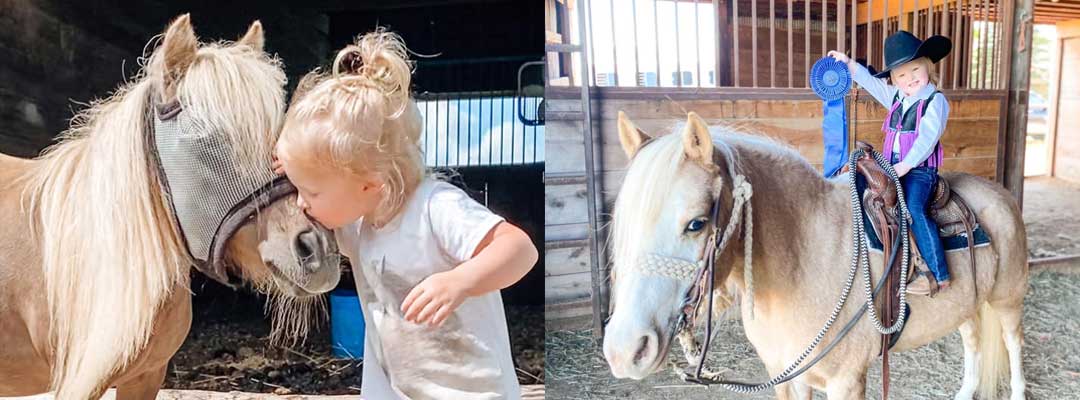
The daughter of an equestrian and team roper -- and granddaughter of a 4-H horsemanship leader and farrier -- 3-year-old Payton was simply born into the horse world. Smiling ear-to-ear pictured upon her pony, Taco, with a blue ribbon on his bridle, it’s easy to see the family passion runs deep. She’s a horse girl through and through.
For parents with children who dream of getting a horse one day, or maybe already have horses and would like to help start their kids off on the right hoof with horseback riding, where does one begin?
Ashley Wheeler -- ranch rider, former collegiate equestrian, wife and mom of Payton -- explains three key factors that helped to encourage young Payton’s love for and involvement with horses.
1: It’s her decision.
“She loves her pony, Taco -- a little Palomino pony with stocking legs and blue eyes. She goes to horse shows with us, and she goes out with us when my husband ropes. She’s playing in the arena when we ride.
We make sure that it is her choice and her decision to be involved in horses. Of course, my husband and I want her to be involved in horses, but we know that it’s her choice, and it has to be a decision that she makes.
If she wants to ride when she gets home every day, she wants to. But if she says she doesn't want to ride today, then we're not going to force it. So, anytime she shows the interest, we support it fully, but we're never going to say, ‘Hey, we have to ride.’
I've seen kids that have been forced to ride, and as soon as they can stop, they do. We want to encourage them to be involved, whether it's showing or barrels -- whatever -- but it needs to be their idea. And while that's kind of frustrating, at the same time, it is awesome when you see her be excited about it.”
2: Horse care is a priority.
“We have a similar approach to my dad's, when I was a little kid. ‘We have these animals, and it's our job to take care of them.’ That's definitely something that was important to my parents [both horsemen] when growing up. Payton continues to get more and more involved in the horses as she gets older. She’s even started helping me clean stalls now. She understands that if it's hot outside, we need to go check the water for the horses, or that Taco is hungry, and we need to go feed him breakfast.”
3: She has a kid-safe pony or horse.
“I see a lot of people wanting to get a young horse for their young kids, so they can ‘grow together.’ But I think there is nothing better than a ‘been there, done that’ safe, older horse for a kid. I believe these horses know it’s a reward for being good for their earlier parts in life. They get to be brushed on and have bows put into their mane.”
Find everything needed to support your young rider’s love for horses, including tack, horse riding helmets and more at ValleyVet.com.
This safety video brought to you by Certified Horsemanship Association (www.cha.horse)
Fred and Stan will demonstrate an easy and safe method of putting up a Highline for your horse.
CHA Master Instructor and Clinician Mitzi Summers explains the hows and whys of long lining or double lunging a horse in this educational video by the Certified Horsemanship Association
For more information on the largest certifying body of riding instructors and barn managers in North America, Certified Horsemanship Association, please visit www.CHA.horse. To find a certified equine professional or accredited equine facility near you, visit www.CHA.horse
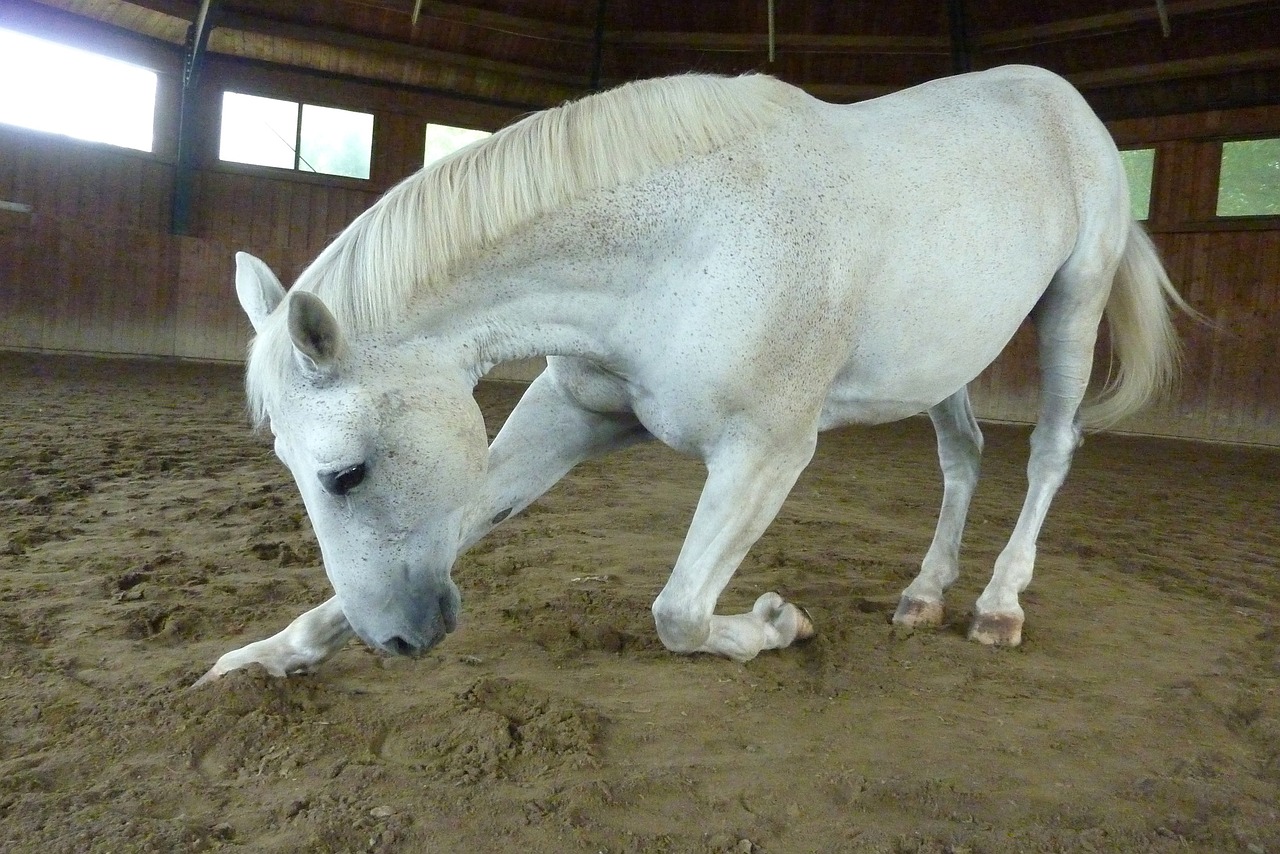
By Juliet M. Getty, Ph.D.
Researchers from Poland set out to determine the effect of music played in the barn, on the emotional state of race horses. Many horse owners have found that music has an apparent calming effect on fear, aggression, and overall stress. Race horses, in particular, have demands of increased cardiac activity and speed that may be improved through music exposure.
Forty 3-year-old Arabian horses were placed in a barn where they listened to specifically composed music [i] for five hours each day. Their emotional state was assessed by measuring heart rates at rest, saddling, and warm-up walking. Racing performance and number of wins were also recorded. At the end of each month, for three months, data were compared to a control group of horses subjected to the same activity, without having listened to music.
Results
The music positively impacted the emotional state and performance of treated horses, compared to the control group. What was so remarkable was that the effect was noticeable throughout every activity, even during the heightened excitement of being ridden at a gallop.
Even more noteworthy was the positive influence the music had after the second and third months, improving with each subsequent month, exhibited by the number of races won. Beyond three months, however, the impact leveled off, presumably because the horses became accustomed to the music.
Implications for your horses
Horses are individuals and respond to stress in a variety of ways. This study offers one approach toward helping your horse calm down and better respond to performance demands.
But all horses, not just athletes, can benefit from a relaxed, stress-free environment.
Increased amount of stall confinement, often seen with the onset of winter weather, can agitate many horses. Soft music, such as was used in this study (see endnote for more information), can be a useful tool in helping your horse cope with being indoors, as well as veterinary and farrier visits, travel, and other stressors.
Study
Stachurska, A., Janczarek, I., Wilk, I., and Kedzierski, W., 2015. Does music influence emotional state in race horses? Journal of Equine Veterinary Science, 35(5), 650-656.
[i] Composed by Janet Marlow of Pet Acoustics, a specialist in music for animals. Her music can be purchased at www.petacoustics.com
This article originally appeared on Getty Equine Nutrition and is published here with permission.
Find more informative articles in our section on Health & Education.
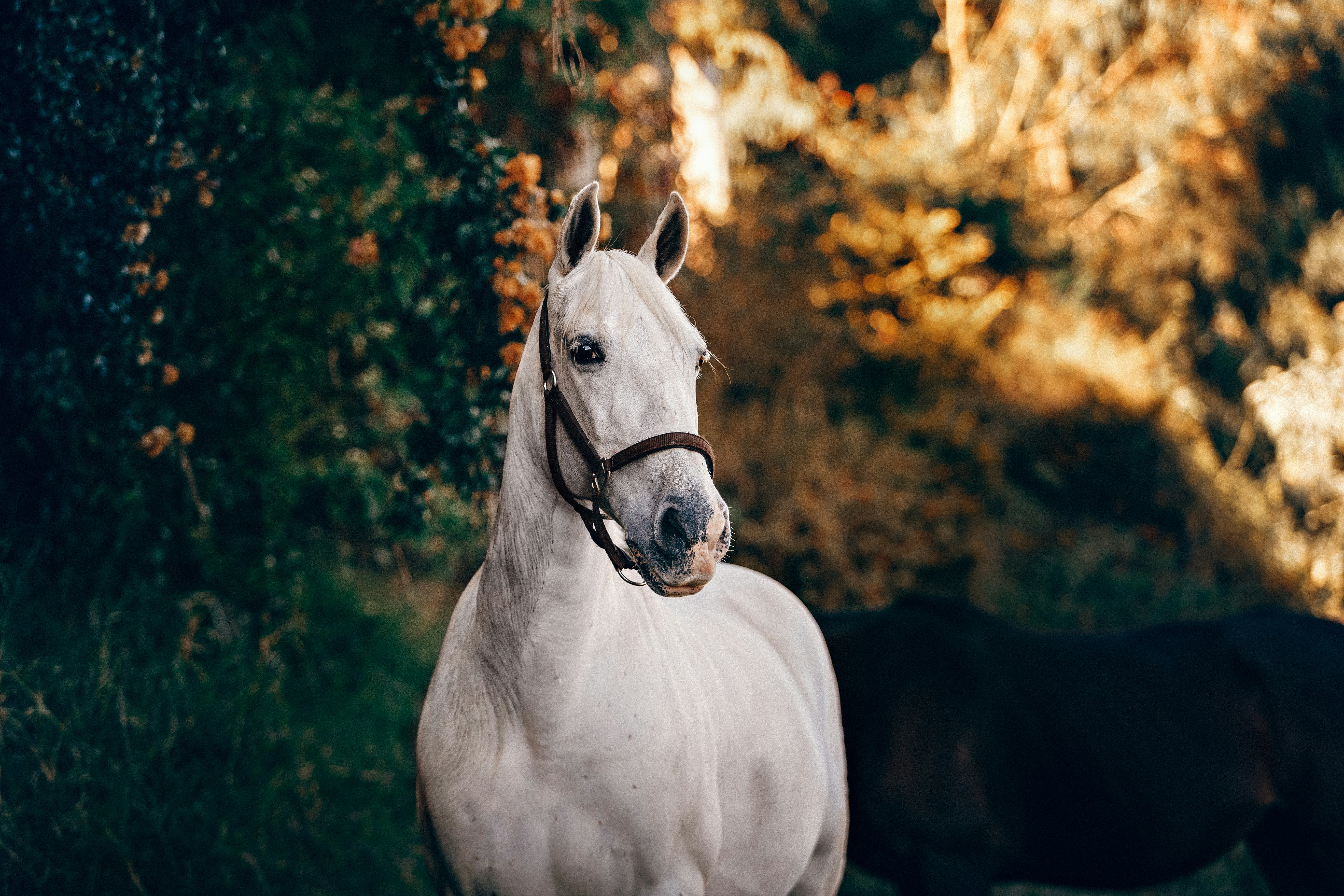
A horse may need to be sedated at various points in its life. Whether it is undergoing a dental procedure, veterinary examination or surgery, sedation will ensure the horse remains safe, cooperative and free from pain and distress throughout the entire process.
By inducing muscle relaxation and reducing anxiety or fear in a horse, sedation allows veterinarians and trainers to carry out treatment and care for an animal, ensuring they remain still for an extended period, reducing the risk of injury or discomfort. The amount of sedative given to a horse will depend on the treatment or procedure required and should always be administered under the supervision of a trained veterinarian. In this article, we will look at what to expect when sedating a horse for the first time.
Light Sedation
The administration of a light sedative aims to put a horse into a relaxed state while still allowing it to remain responsive. This may be required to calm a horse and help reduce its anxiety when undertaking activities such as clipping or other routine care. When under light sedation a horse will still be responsive, and can even ‘spook’ at certain stimuli, such as unexpected sights or sounds. A veterinarian may prescribe a light sedative for owners to administer to their horses with clear instructions on how to do so to ensure the horse’s safety and well-being.
Medium Sedation
Medium sedation will induce a deeper level of relaxation in a horse. As a result, the horse will become very calm and display a sleepy appearance which may include a drooping lower lip and lowered head. As the horse may become slightly unstable on its feet, some support is advised to prevent it from falling.
This standing sedation is often used when scanning a horse for tendon and ligament injuries and for dental procedures such as removing wolf teeth as it puts the horse in a semiconscious state, allowing the veterinarian to safely and effectively handle the animal and perform the necessary treatment.
Heavy Sedation
This level of sedation will induce high levels of drowsiness and relaxation in a horse and will require a veterinarian to be present throughout the procedure. A horse that is heavily sedated will typically appear very tired and sleepy with its lower lip and head dropping towards the ground.
Despite their unsteadiness, horses usually remain standing when administered with a heavy sedative. This should be done in a safe and closely confined area that has a supportive surface to prevent the horse from receiving any injuries. Heavy sedation is typically used for invasive procedures such as extensive dental work or when suturing wounds to ensure the horse remains calm and manageable throughout.
Recovery
Horses tend to recover relatively quickly from sedation, although the exact duration will depend on the drug and the level of sedation administered. During their recovery, horses should be provided with a quiet and safe environment that is free from draughts, as profuse sweating is also likely during this time. Any feed or other edible items should be removed to prevent the horse from attempting to eat them and choking. Once the effects of the sedative have worn off the horse can gradually begin resuming its normal activities.
An experienced veterinarian can provide more information and advice on safely sedating a horse.
You can find more intriguing articles in our section on Health & Education.
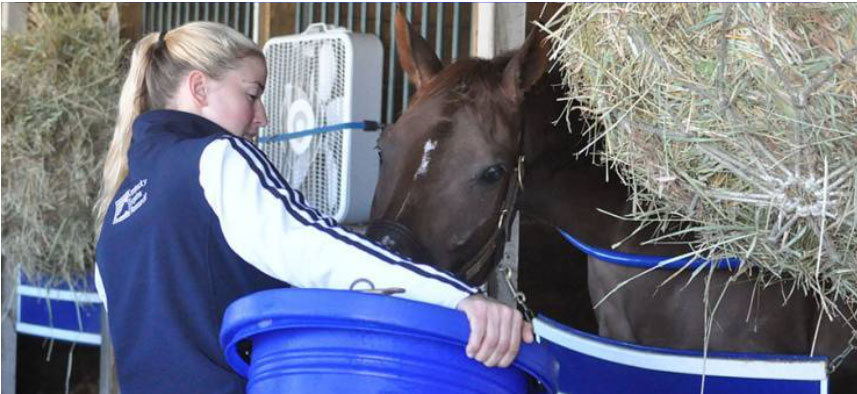
By Kentucky Equine Research Staff
Fiber fermentation in the hindgut provides the horse with energy to grow, work, and play. The fiber fraction of a horse’s diet typically comes from pasture or hay, but there are forage alternatives that can help supplement energy, benefit the digestive system, and provide fiber for horses that have trouble chewing traditional forage.
One such forage alternative is beet pulp. According to Kathleen Crandell, Ph.D., a nutritionist at Kentucky Equine Research, “Beet pulp is an energy-rich source of digestible fiber that helps promote a healthy microbial population in the hindgut.”
Beet pulp is a byproduct of the sugar beet industry. Sugar beets are grown and harvested to make sucrose and sugar, and beet pulp is the plant material left over once the sugar has been removed. Because of the processing, beet pulp contains minimal sugar.
“Dried beet pulp products are usually available with or without added molasses. The sugar content of unmolassed beet pulp shreds is less than 10%, making it a safe feed for horses that need a low-sugar diet. Shreds with added molasses contain, on average, less than 15% sugar,” explained Crandell.
Beet pulp is considered a prebiotic, meaning it is beneficial to the millions of microbes in the horse’s hindgut. A robust, well-functioning microbiome contributes to overall health. Despite its prebiotic benefit, beet pulp should never be the sole fiber source of the diet. Beet pulp is low in protein (typically 8-10% crude protein) and rich in calcium but is devoid of vitamins and low in other minerals. While research reported in Nutrient Requirements of Horses, published by the National Research Council, showed that a diet consisting of 45-55% beet pulp had no negative effects on the horses consuming it, beet pulp alone will not provide sufficient nutrients, noted Crandell.
Beet pulp can be used to help underweight horses gain weight, as it provides approximately 1,000 kcals per pound (one quart of dry beet pulp shreds weighs approximately 0.5-0.6 pounds). Byproducts of microbial fermentation of beet pulp in the hindgut include volatile fatty acids, or VFAs, which are absorbed and turned into energy. This energy does not cause a spike in glucose or insulin and is released slowly for a more steady supply. Beet pulp is a common ingredient in commercial grain concentrates because of its energy density and benefit to the microbiome.
Beet pulp can also be used as a top-dressed supplement. Soaking is recommended because beet pulp holds moisture, making it useful for adding water to the digestive system.* Dry shreds will not swell in the throat or stomach when fed appropriately. If feeding beet pulp pellets, soaking is required because of the hardness of the pellet and the significant change in volume once pellets are wet.
Beet pulp has an unfair reputation for causing choke in horses. Choke can be caused by any feedstuff, including forages, that are eaten greedily and swallowed without proper chewing.
In summary, beet pulp is an option for adding energy and promoting digestive health in horses. Contact a KER nutrition advisor for advice on whether beet pulp is right for your horse.
- Monty Roberts - Cinder Part 2 The Value of Force Free Training (2:19)
- Monty Roberts - Cinder Part 1: Join Up with a Wild Horse (2:04)
- Inside the In Vitro Fertilization Lab at Rood & Riddle with Dr Charlie Scoggin & Dr Maria Schnobrich (37:25)
- The Making of a Dressage Trainer
- Topline Loss - How Nutrition Can Help
- Ask Monty: Why is my horse aggressive at feeding time? (1:22)
- New Tool Recognizes Pain in Horses with Osteoarthritis
- My Horse is Gaining Weight on Free-Choice Forage! Why Isn't it Working?
- 6 Must-haves For Your Next Horse Show
- Inside the Recipient Mare Herd from the Rood & Riddle Reproduction Center with Crystal Howard" (24:28)
- Breeding for the Next Champion: 6 Important Considerations for Broodmares
- Empty Fields Everywhere Why Movement is So Important
- Hard Tying the Horse to a Rail or Post with Michal Kays (5:37) - Certified Horsemanship Association
- The Icelandic Horse - Quite the Characters!
- 4 Signs of a Happy Horse
- Stallside Podcast - Behind the scenes with the Rood & Riddle Anesthesia and Surgery Technician Team (34:01)
- Breaking the Cycle of Hoof Lameness: Navicular, Laminitis, Pedal Osteitis (14:25)
- Rood & Riddle: Advances in Equine Healthcare (6:37)
- Extending Photoperiod for Muscle Development in Young Horses
- Adopting a Wild or Feral Mustang?






